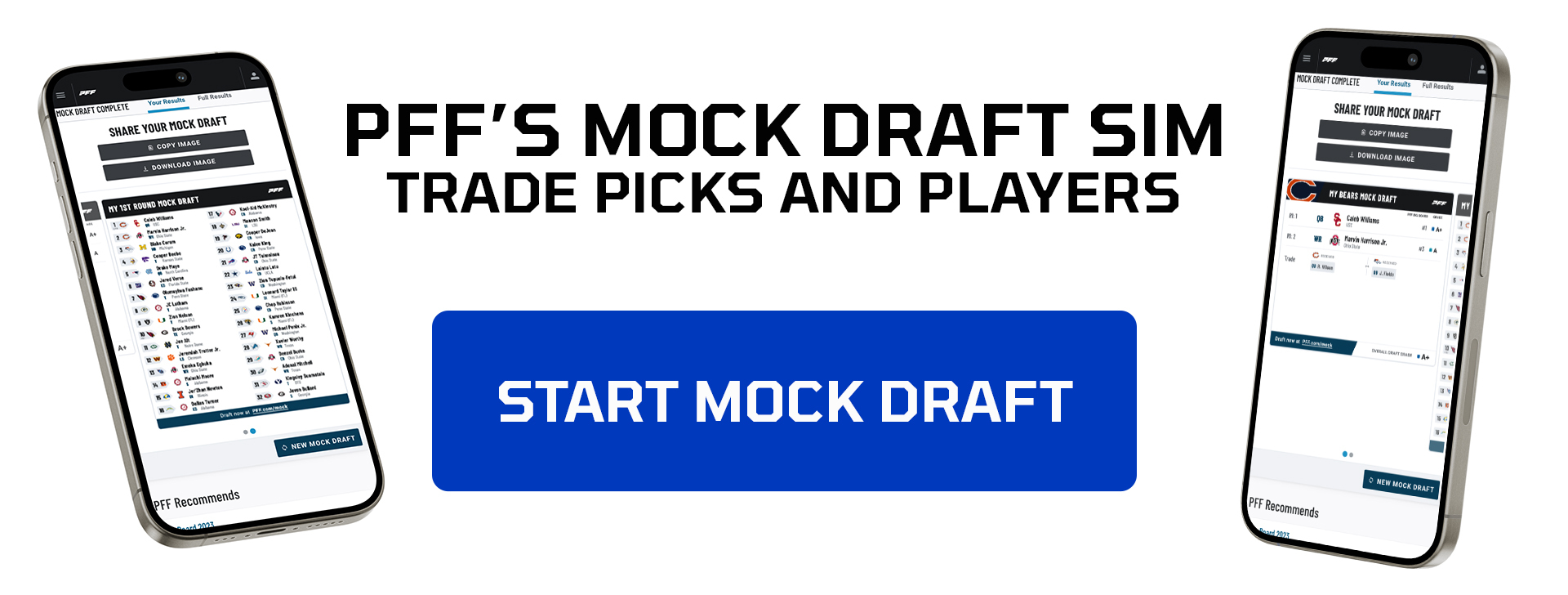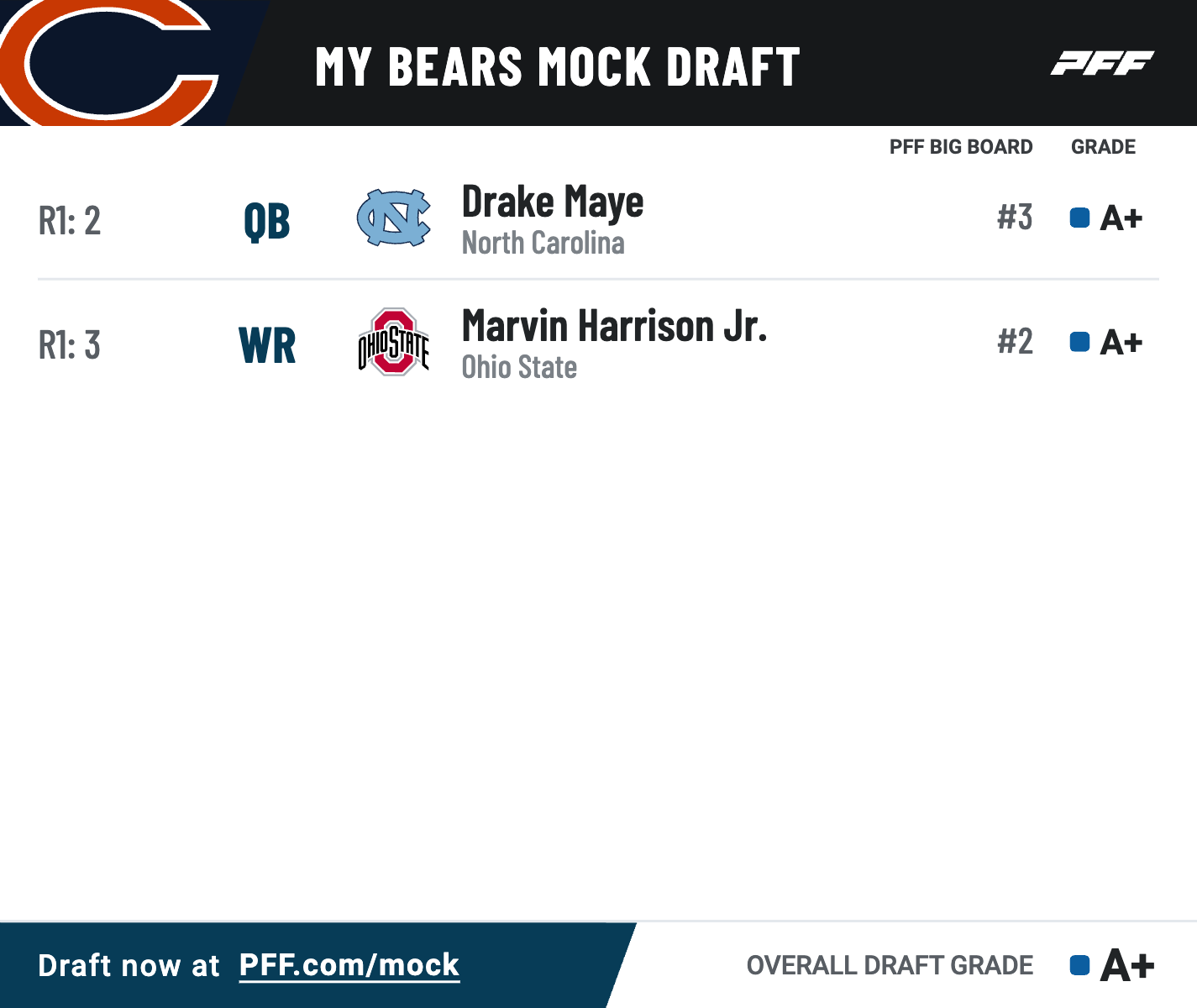• The significance of Rashan Gary's pre-deadline extension: Several other edge defenders — many first-round picks in the 2019 draft class — are looking for extensions, so Gary's deal is something to compare to.
• Bears' Montez Sweat, Jaylon Johnson are in line for new deals: Chicago just traded for Sweat, whereas Johnson had requested a trade but was retained through the deadline.
• Draft and trade for yourself: Try PFF's Mock Draft Simulator — trade picks and players and mock for your favorite NFL team.
Estimated Reading Time: 6 minutes
Lost in the shuffle of the NFL trade deadline hysteria was a very notable and influential contract extension for Green Bay Packers edge defender Rashan Gary. Gary signed a four-year, $96 million deal, but the details are still yet to be made public outside of his signing bonus, which, according to NFL Media's Ian Rapoport, came in right under $35 million.
Gary has recovered nicely from a torn ACL sustained in 2022, and while he is still not playing full snap counts this season, he is disrupting opposing quarterbacks as frequently as any player in the NFL. Gary’s 25.5% pass-rush win rate in 2023 ranks second in the NFL, behind only Cleveland Browns superstar Myles Garrett, and his 22.1% pressure rate trails only New York Jets edge defender Bryce Huff.
We say Gary’s contract is influential because there are several other edge defenders — many first-round picks in the 2019 draft class — looking for extensions. A particularly relevant move is the division rival Chicago Bears striking a deadline trade for former Washington Commanders edge defender Montez Sweat, a fellow 2019 first-round pick. Sweat is also playing on his fifth-year option in 2023, as Gary was before his extension, and he now holds major leverage over the Chicago Bears as they work to extend him.
At last year’s trade deadline, edge rusher Bradley Chubb joined the Miami Dolphins and agreed to a five-year, $110 million extension. This is the smarter path to take with these blockbusters, with other recent examples including Philadelphia Eagles wide receiver A.J. Brown. The more time that passes, the more leverage the player holds over the club that does not want to give up premium draft capital for what effectively turns into a rental.
The franchise tag always exists, but in Chicago, there is now a complicated dynamic with their refusal to trade away cornerback Jaylon Johnson following his request. More on that later.
EDGE Montez Sweat, Chicago Bears
We discussed the Rashan Gary deal and the impact on the position market, but Sweat falls into a different mold of pass-rusher — more of a Demarcus Lawrence type who is elite against the run and can win with speed-to-power as a pass-rusher. But he is not the bendy, hyper-explosive pass-rusher that Gary is. The top of the market goes to players who possess both abilities, and then the two buckets of players with more specific skill sets filter down from there.
Sweat has the highest run-defense grade among all edge defenders since 2020 (90.5). Sweat’s lowest snap count in a season for his career is 483 snaps in 2021, with at least 693 in his three other campaigns. Gary has reached the 483 mark only once in four seasons to this point, and his run-defense grade since 2021 is 68.4.
This is not to say Sweat can’t rush the passer — far from it. Since 2022, Sweat’s 89 pressures rank 11th among edge defenders, his 13.6% pressure rate ranks 25th among edge rushers with at least 250 pass-rush snaps and his 14.5 sacks rank tied for 13th.
With the added leverage of Chicago moving what figures to be a top-40 draft pick for his services, here’s where we see a deal ending up.
Contract projection: Four years, $100 million ($25 million per year), $70 million total guaranteed
CB Jaylon Johnson, Chicago Bears
The most recent cornerback contract that wasn’t quite top of market — just a step below — was Dallas Cowboys cornerback Trevon Diggs signing a five-year, $97 million deal. Diggs was selected No. 51 overall in the 2020 NFL Draft, the next selection after Chicago drafted Johnson.
While the total number and $19.4 million per year average reflect a top-of-market deal for Diggs, the fundamentals tell a different story. Diggs’ three-year new money cash flow is $55.5 million, an average of $18.5 million per year over the years that contain guarantees and/or are far more likely to actually be earned. For reference, Buffalo Bills cornerback Tre’Davious White’s four-year, $69 million extension earning an average annual value of $17.25 million pays him more in new money through the third year, at $56.3 million.
Diggs received $42.3 million in total guarantees, which also trails White’s $55 million by a far wider margin. The Chicago Bears may think both of these contracts aren’t the comparables we should be looking at, viewing Johnson as belonging more in the range of Tampa Bay Buccaneers cornerback Carlton Davis’ three-year, $44.5 million extension at $14.83 million per year with $30 million in total guarantees ($30 million out of $44.5 million is a larger percentage than Diggs but still well short of White). Davis was another second-round pick, back in 2018.
Not to belabor the Diggs comparison, but the two players could not have different styles of play. Diggs is a risk-taking playmaker who racked up a staggering 11 interceptions in 2021 with nine more pass breakups. However, he was also credited with allowing more than 1,000 receiving yards that year, and the disconnect between his coverage grade and interception totals led to not one but two articles from PFF attempting to explain the disparity. A numbers-based approach from Sam Monson and a film-based breakdown from Diante Lee.
To be clear, Diggs is a special talent, and he was playing the best football of his career early on in 2023 before an unfortunate ACL injury. Johnson has some minor injury history of his own, particularly shoulder issues that go back to his college days at Utah, but logged more than 850 snaps in his first two seasons before missing a larger chunk in 2022.
Johnson is more of a lockdown outside cornerback who prevents quarterbacks from even throwing the ball in his direction in the first place. Cases can be made for either approach, but looking at Johnson’s interception numbers would also paint an incomplete picture in the opposite direction. Johnson did tally two interceptions, including a pick-six, in a win over the Las Vegas Raiders just a few weeks ago, so he’s more than capable.
So far in 2023, Johnson’s 85.8 coverage grade is the third-best mark in the NFL. He is allowing just a 42.3% completion rate, which ranks fifth, and 0.55 yards per coverage snap, which ranks seventh. Johnson has never surrendered a 60.0%-plus completion rate in a season. Last but certainly not least, Johnson has not benefited at all over the past two seasons from the defensive line in front of him. It’s the exact opposite, as the Bears are generating pressure less often than any other team over the span.
While we’re not at all sure Chicago would agree to the below, here’s around where we think Jaylon Johnson would like to end up. Players often care most about the total value or average per year and how that stacks up across the position, but as we illustrated above, those figures do not perfectly capture the strength of a contract on their own.
Contract projection: Five years, $95 million ($19 million per year), $47.5 million total guaranteed





 © 2025 PFF - all rights reserved.
© 2025 PFF - all rights reserved.